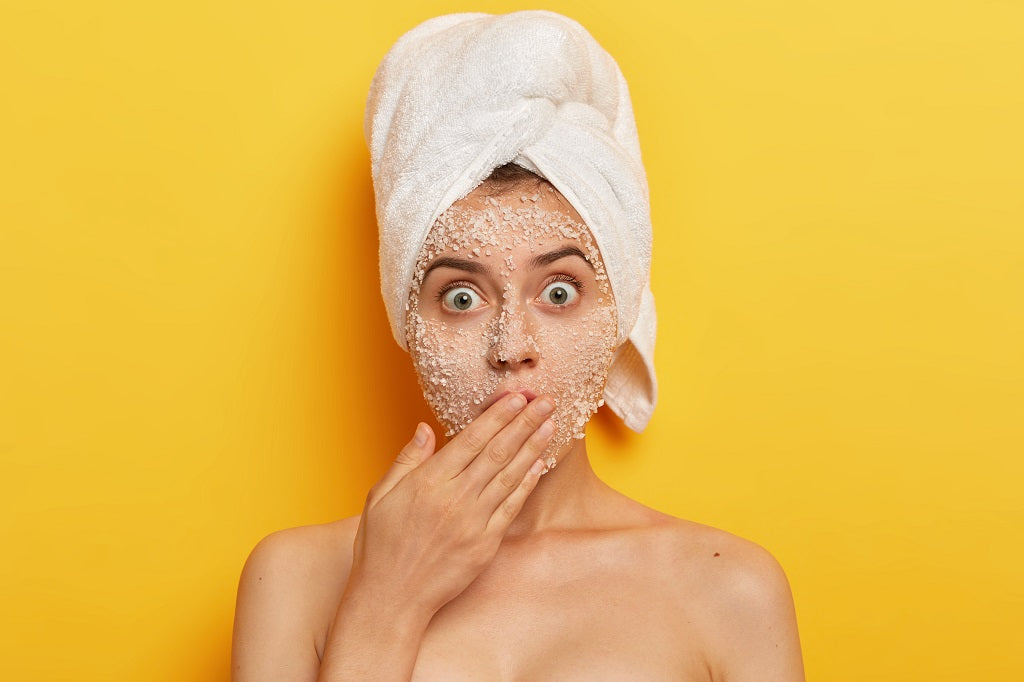Eyes are the window to our soul, and dark circles are like eclipses casting a shadow. Most of us take good care of our facial skin to attain radiant and younger-looking skin. But the majority of us often ignore the skin under our eyes. The area under the eyes is very thin, delicate and is the first to show signs of ageing. Wrinkles, fine lines, dark circles and puffy eyes are some common under-eye skincare issues which many of us face.
It is crucial to have a skincare regime in place to address the untold woes of our under eyes. The market is overloaded with a plethora of under eye creams and gels which promise to remove dark circles and wrinkles; unfortunately most of these claims cannot be replicated in practice. As the area under your skin is very delicate, you should take utmost care while dealing with it. In this article, we will be sharing a dermatologist-approved skin care regimen for healthy, glowing and bright eyes.
Importance Of Under-Eye Skincare
The area under your eyes is very sensitive and can be a mirror to your physical and emotional well being. Lack of sleep, stress, tension, fatigue can have a detrimental effect on your health which reflects directly on the skin under your eyes. Increased screen hours, exposure to sunlight, smoking, etc., can also affect the skin under your eyes. More concerns can arise from bad skincare habits, such as using the wrong products around the eyes or forgetting to remove eye makeup before hitting the bed.
Many of us overlook the needs of the skin under our eyes, but since this area is delicate and more prone to dryness, we should always keep it moisturized. Some common under-eye skin concerns are dark circles, puffy eyes, crows feet. The area under the eyes needs more hydration than the rest of our skin. Proper skincare is a crucial step in any skincare regime as it helps to fight early signs of ageing, giving you even-toned and radiant skin.
Under-Eye Skincare Regime
Finding the right skincare regime can help in making a drastic improvement in the under eye area. With so many skincare products directly catering to different requirements like crow’s feet, dark circles, under eye bags etc., one can seldom go wrong with their choices. Here we will be sharing an easy to follow nighttime under-eye skincare regime which is recommended by skincare experts for dealing with crow feet, dark circles, and puffy eyes.
Step 1: Cleanse Your Skin Gently
A major taboo in the world of skincare is to go to bed without thoroughly removing every speck of makeup from the face. It is imperative to use a gentle yet effective cleanser to completely remove makeup, dirt and grime from the skin. Use a cotton pad to remove makeup under your eyes. Take an oil-based make-up remover on the cotton pad and place it on the eyelids. Let it rest for few seconds so that the remover melts the stubborn mascara and eye-liner, then swipe it away with the cotton pad. Repeat this process until all the eye-makeup is removed. Similarly, remove makeup from the rest of the face as well.
Also Read : Are You Cleansing Your Face Properly?
Step 2: Use A Toner To Restore The pH Of The Skin
Take a natural toner and soak the cotton pad in it. Gently wipe your face with the cotton pad. Toner helps to restore the natural pH of your skin and removes any leftover dirt, makeup and grime from your face.
Step 3: Apply An Under-Eye Serum
After completing the two aforementioned steps, apply an under-eye serum on the skin under your eyes. Serums should always be applied before eye cream because their lightweight texture gets absorbed easily and following with a cream keeps the undereye hydrated. Vitamin C serum works best to treat all your under-eye related skin concerns. Its powerful antioxidant properties fight free radicals responsible for the appearance of wrinkles and fine lines. Its skin brightening property helps dispel dark circles under the eyes. Other skin brightening ingredients such as kojic acid, liquorice extract, niacinamide also work in reducing dark circles.
Also Read : Dark Circles - Skincare Experts Reveal about the Causes and Ways to Reduce It!
Step 4: Apply An Eye Cream
Once you have applied your eye serum, follow it up with a moisturizing eye cream. While applying eye cream, go gentle as the area around the eyes is delicate and sensitive. Gently massage the skincare product around the skin without pressing too much. In your eye cream look for hydrating and brightening ingredients such as retinol, hydroquinone, cysteamine.
Step 5: Massage Gently
Gently massage the area around your eyes for improved blood circulation. By doing so, the lymphatic system is stimulated, thereby reducing puffiness under the eyes. It is best to use a light moisturizer, containing hyaluronic acid for oily skin, and an emollient based moisturizer for dry skin. Dermatologists advise using very light pressure in this delicate area, while applying any kind of cream.
Step 6: Finish With A Facial Oil
The last and final step of your under-eye skincare routine is applying face oil as it provides an additional layer of hydration and nourishment to your skin. Well-hydrated skin looks healthy and plump, thereby reducing wrinkles and fine lines. Experts advise using a face oil containing natural compound-bakuchiol which is a natural alternative for retinol. Unlike retinol, bakuchiol does not exhibit any side effects on your skin.
Also Read : Back to Basics: Best Facial Oils for Every Skin Type
Follow this under-eye skincare routine daily at night, to let the skincare products sink into the skin, allowing it to work the whole night so that you wake up with bright, well-hydrated and problem-free skin.
When Is It Best To Start An Undereye Skincare Routine?
As per our expert, it is always better to prevent early signs of ageing instead of allowing them to get worse and treating them later. It is ideal to start with a dedicated under-eye skincare routine in the late 20’s when the collagen in your body starts depleting and your skin starts losing its elasticity, leading to the appearance of wrinkles and crow's feet.
Disclaimer: All the content on anveya.com/blogs is solely for information. It is not intended to be a substitute for professional medical advice, diagnosis or treatment. Always seek the advice of your physician or a qualified health care provider. The information, suggestion or remedies mentioned on this site are provided without warranty of any kind, whether express or implied.



